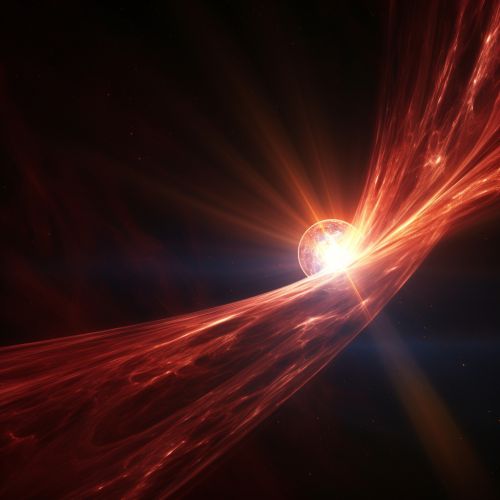Pulsar
Introduction
A pulsar is a highly magnetized, rotating neutron star that emits beams of electromagnetic radiation out of its magnetic poles. This radiation can be observed only when the beam of emission is pointing towards the Earth, much the way a lighthouse can be seen only when the light is pointed in the direction of an observer. This is called the lighthouse effect.


Discovery
The first pulsar was observed on November 28, 1967, by Jocelyn Bell and Antony Hewish. The discovery of pulsars was one of the biggest surprises in the history of astronomy. Pulsars were initially dubbed "LGM" (Little Green Men) due to the regularity of the emission, which seemed to suggest an artificial source.
Characteristics
Pulsars are known for their extreme conditions. They have incredibly strong magnetic fields and their surfaces can reach temperatures of millions of degrees. The density of a neutron star is such that a sugar-cube-sized amount of its material would weigh about as much as a mountain on Earth.
Rotation and Radiation
The rotation of a pulsar is incredibly stable, with some pulsars rivaling atomic clocks in their precision. The beams of radiation emitted by pulsars are due to charged particles being accelerated near the magnetic poles, which are not aligned with the rotation axis. This misalignment causes the beam to sweep around as the pulsar rotates, leading to the observed pulses of radiation.
Magnetic Field
The magnetic field of a pulsar is about a trillion times stronger than the Earth's magnetic field. This strong magnetic field, combined with the rapid rotation, generates an intense electromagnetic field that creates beams of radiation.
Types of Pulsars
There are several types of pulsars, including rotation-powered pulsars, accretion-powered pulsars, and magnetars.
Rotation-Powered Pulsars
Rotation-powered pulsars, also known as "ordinary" pulsars, are powered by the loss of rotational energy. They are characterized by their steady rotation and strong magnetic fields.
Accretion-Powered Pulsars
Accretion-powered pulsars are powered by the gravitational energy of accreted matter. These pulsars are typically found in binary systems where matter is transferred from a companion star.
Magnetars
Magnetars are a type of neutron star with an extremely powerful magnetic field. They are the most magnetic objects in the universe, and their activity is powered by the decay of this magnetic field.
Pulsars in Astronomy
Pulsars have been used as tools in several areas of astronomy. They have been used to confirm the existence of gravitational waves, to measure the ionized component of the interstellar medium, and to test theories of gravity.
